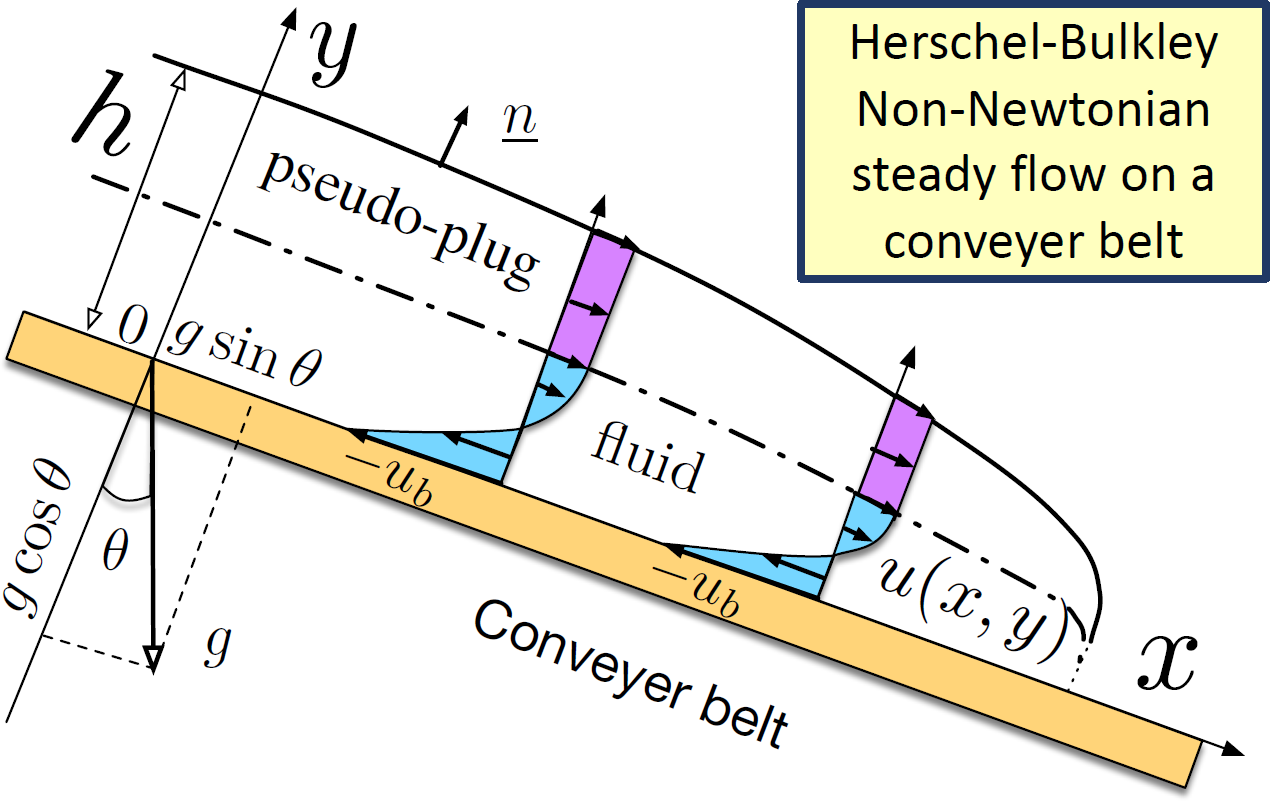Non Newtonian free surface flows
The research focus on the modeling of non-Newtonian flows materialized with the publication of a PhD thesis work in 2014 on the resuspension of cohesive sediments, representative of estuarine bottom silt (Harang et al., Environmental Fluid Mechanics, 2014). A first approach consisted in modeling the mud cream by a fluid of spatially varying viscosity, depending on the sediment concentration. Different instabilities, responsible for resuspension, were documented using linear analysis, followed by turbulent direct numerical simulation. A second approach, continued until 2019, consisted in modeling the water-silt mixing by a Bingham-type behavior law. A sensitivity analysis to the parameters, in particular to the critical threshold of parietal stress, was conducted.
This work, based on numerical simulations with the community code JADIM of the IMFT, motivated experimental work with Carbopol, appreciated for its adjustable non-Newtonian behavior (Hershel-Bulkley law) and its transparency. The flow generated by the rotation or oscillation of the inner cylinder of a free surface tank was documented using PIV measurements in a horizontal plane. The rheological behavior observed in this experiment, after optimization of the rheological parameters, was compared to the behavioral law measured with the laboratory precision rheometer. The discrepancies between these laws and the viscoelastic behavior of Carbopol were documented and explained (Lacaze et al., Journal of Non-Newtonian Fluid Mechanics, 2015).
The modeling of free surface flows of non-Newtonian fluids using a 1D Saint-Venant type approach has been the subject of another study. This modeling allows to consider vertical velocity profiles that deviate significantly from the normal profiles (balance between geometric and frictional slopes) usually assumed. A decoupling between the vertical columns of the gradually varying flows allows to reduce the determination of these vertical profiles to the numerical solution of an implicit equation depending on the slope of the free surface. This model is applied to the determination of eddy curves of non-Newtonian gravity currents observed in laboratory or in natural environment: mudflows, avalanches, …






